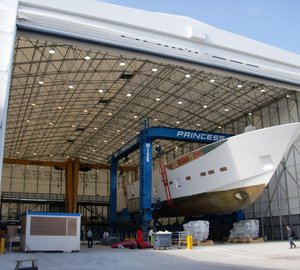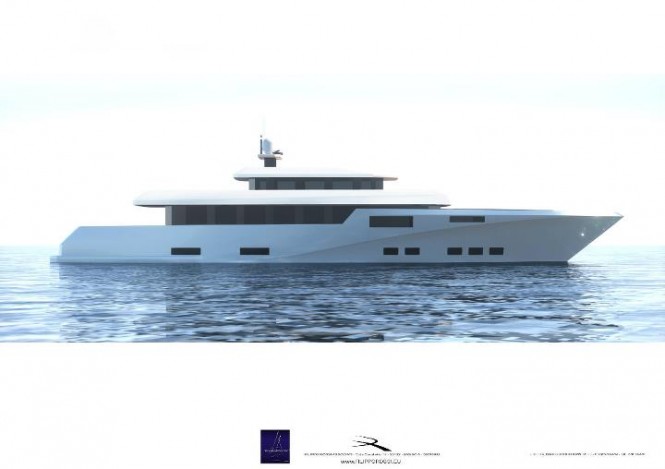The GANTO motor yacht Project is a 40m EcoYacht designed to have the lowest levels of environmental impact possible. The motor yacht GANTO Project will utilise advanced building materials with maximized recycling criteria, along with fluid dynamics studies and an environmentally sound management of the vessel, making this project the first of a new generation of unique and environmentally friendly vessels. The GANTO Project offers a technical and scientific platform to be used for different types of yachts, both sail and motor, from about 30 meters in length and above.
Equipped with all the “green” technologies known today, which means not only highly efficient rechargeable batteries, the yacht is also equipped with photovoltaic panels, wind generators, shaft generators, fuel cells, energy consumption monitoring and energy recovery, LED lighting, and the creation of environments with “home climate” technologies: a vessel that exceeds market expectations in terms of performance and energy consumption and reflects the values of respect for the environment and beauty, both in life and while sailing, ultimately ensuring well-being understood in its broadest sense, all in the most exclusive luxury.
Naval architecture and engineering for the GANTO Project was conceived by the Roberto Starkel studio in Trieste, and interior design and exterior styling is by Filippo Rossi. The propulsion technology is based on systems already employed by some cruise ships whereby a small diesel engine provides the initial power to turn over the electric motors. The full-electric main motors ensure that both vibrations and emissions are reduced to a minimum.
Starkel paid close attention to the hull’s hydrodynamic characteristics to provide an efficient, slick hull without penalising the volume of space onboard or the stability by reducing maximum beam. It is also of utmost importance to limit the weight of the yacht’s structure, systems and interiors and thus overall displacement, the highest priority of this project.
The power systems are also designed to be modular so that upgrades can be applied as technology develops, including the use of fuel cells, without major structural alterations. Solar panels on the fly deck and aft main deck are designed to supplement power requirements.


















